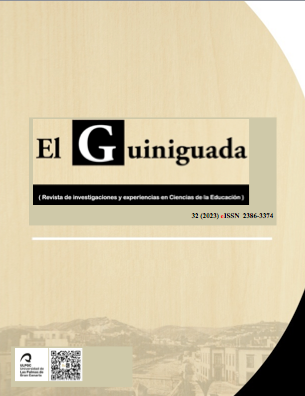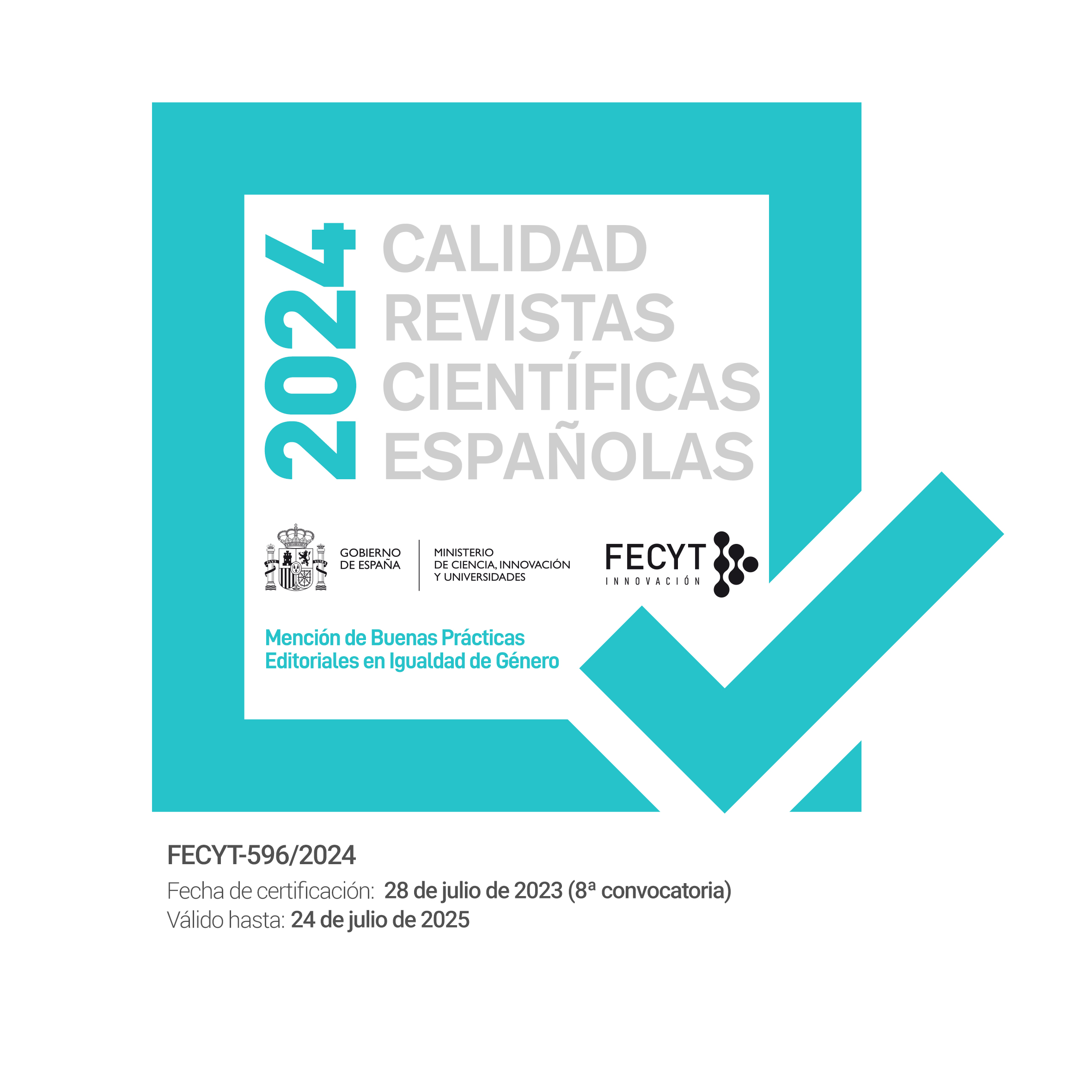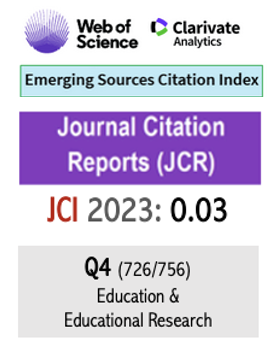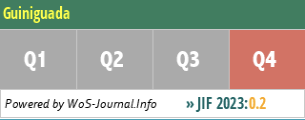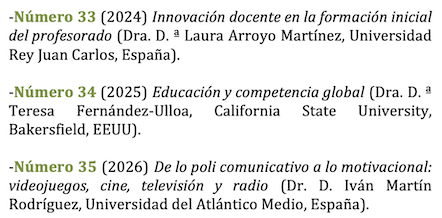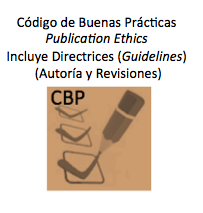Bilingual Education during a Pandemic: Family Engagement. La educación bilingüe durante una pandemia: compromiso familiar
doi.org/10.20420/ElGuiniguada.2022.503
Palabras clave:
FAMILY ENGAGEMENT, PARENTAL INVOLVEMENT, EMERGENT BILINGUAL, ONLINE TEACHING, INSTRUCTIONAL TECHNOLOGY, ENGLISH LEARNERSResumen
Durante la pandemia global de COVID-19, los maestros han tenido que ser creativos para poder conectar con las familias de los estudiantes bilingües emergentes. Este análisis de contenido de cuatro grupos focales de maestros revela las maneras en que estos conectaron con sus estudiantes a distancia. El propósito de este ensayo es descubrir, de los educadores, estrategias de enseñanza efectivas que atrayeron a las familias y a los estudiantes bilingües emergentes durante la pandemia de COVID-19 y enseñanza en línea. Los resultados incluyeron los temas de la tecnología instruccional, construir relaciones con las familias y acceder a los activos de los bilingües emergentes y sus familias. Hay conexiones con el concepto de cariño (Bartolomé, 2008), el concepto de educación (Valenzuela, 1999), y el término ‘bilingüe emergente’ (García, 2009).
Descargas
Citas
Baker, C. D. (2014). Transcription and representation in literacy research. In J. Flood, D. Lapp, & S. B. Heath. (Eds.), Handbook of research on teaching literacy through the communicative and visual arts (pp. 110–120). Routledge.
Bartolomé, L. (2008). Authentic cariño and respect in minority education: The political and ideological dimensions of love. International Journal of Critical Pedagogy, 1(1), 1–17.
Bourdieu, P. (1986). The forms of capital. In J. G. Richardson (Ed.), Handbook of theory and research for the sociology of education (pp. 241–258). Greenwood Press.
Espino, M. M. (2016). The value of education and educación: Nurturing Mexican American children’s educational aspirations to the doctorate. Journal of Latinos and Education, 15(2), 73–90. https://doi.org/10.1080/15348431.2015.1066250
Every Student Succeeds Act, Pub. L. No. 114–95. (2015). https://www.govinfo.gov/content/pkg/PLAW-114publ95/pdf/PLAW-114publ95.pdf
Ferdig, R. E., Baumgartner, E., Hartshorne, R., Kaplan-Rakowski, R. & Mouza, C. (2020). Teaching, technology, and teacher education during the COVID-19 pandemic: Stories from the field. Association for the Advancement of Computing Education. https://www.learntechlib.org/d/216903
Flick, U. (2018). Doing grounded theory. Sage.
Freire, P. (2005). Teachers as cultural workers: Letters to those who dare to teach. Westview Press.
García, O. (2009). Emergent bilinguals and TESOL: What’s in a name? TESOL Quarterly, 43(2), 322–326. https://doi.org/10.1002/j.1545-7249.2009.tb00172.x
Gay, G. (2018). Culturally responsive teaching: Theory, research, and practice (3rd Ed.). Teachers College Press.
González, N., & Moll, L. C. (2002). Cruzando el puente: Building bridges to funds of knowledge. Educational Policy, 16(4), 623–641. https://doi.org/10.1177/0895904802016004009
Harrell, M. C. & Bradley, M. A. (2009). Data Collection Methods: Semi-Structured Interviews and Focus Groups. RAND. https://www.rand.org/content/dam/rand/pubs/technical_reports/2009/RAND_TR718.pdf
Hesse-Biber, S. N., & Leavy, P. (2011). The practice of qualitative research. Sage.
Jeynes, W. H. (2003). A meta-analysis: The effects of parental involvement on minority children’s academic achievement. Education and Urban Society, 35(2), 202–218. https://doi.org/10.1177/0013124502239392
Jeynes, W. H. (2011). Parental involvement research: Moving to the next level. The School Community Journal, 21(1), 9–18.
Jeynes, W. H. (2017). A meta-analysis: The relationship between parental involvement and Latino student outcomes. Education and Urban Society, 49(1), 4–28. https://doi.org/10.1177/0013124516630596
Krippendorff, K. (2003). Content analysis: An introduction to its methodology (2nd Ed.). Sage.
López Turley, R. N., Desmond, M. & Bruch, S. K. (2010). Unanticipated educational consequences of a positive parent-child relationship. Journal of Marriage and Family, 72(5), 1377–1390. https://10.1111/j.1741-3737.2010.00771.x
Mahaffey, F. D. & Kinard, W. (2020). Promoting home-school connection during crisis teaching. In R. E. Ferdig, E. Baumgartner, R. Hartshorne, R. Kaplan-Rakowski, & C. Mouza (Eds.), Teaching technology, and teacher education during the COVID-19 pandemic: Stories from the field (pp. 235–237). Association for the Advancement of Computing Education.
Maslow, A. H. (1987). Motivation and personality. Harper and Row.
Morita-Mullaney, T. (2021). Multilingual multiliteracies of Emergent Bilingual families: Transforming teacher’s perspectives on the “literacies” of family engagement. Theory Into Practice, 60(1), 83–93. https://doi.org/10.1080/00405841.2020.1829382
No Child Left Behind Act of 2001. Pub. L. No. 107–110. (2001). https://www.govinfo.gov/content/pkg/PLAW-107publ110/pdf/PLAW-107publ110.pdf
Noddings, N. (2016). Philosophy of education. Westview Press.
Owens, L. M. & Ennis, C. D. (2005). The ethic of care in teaching: An overview of supportive literature. Quest, 57(4), 392–425. https://doi.org/10.1080/00336297.2005.10491864
Paris, D. & Alim, H. S. (2017). Culturally sustaining pedagogies: Teaching and learning for justice in a changing world. Teachers College Press.
Pianta, R. C. (1999). Enhancing relationships between children and teachers. American Psychological Association.
Pianta, R. C., Hamre, B., & Stuhlman, M. (2003). Relationships between teachers and children. In W. M. Renolds & G. E. Miller (Eds.), Handbook of psychology: Volume 7 educational psychology (pp. 199–234). John Wiley & Sons.
Pianta, R. C., Nimetz, S. L. & Bennett, E. (1997). Mother-child relationships, teacher-child relationships, and school outcomes in preschool and kindergarten. Early Childhood Research Quarterly, 12(3), 263–280. https://doi.org/10.1016/S0885-2006(97)90003-X
Pianta, R. C. & Stuhlman, M. (2004). Teacher-child relationships and children’s success in the first years of school. School Psychology Review, 33(3), 444–458. https://doi.org/10.1080/02796015.2004.12086261
Saldaña, J. (2016). The coding manual for qualitative researchers (3rd Ed.). Sage.
Salinas, C., Jr. & Lozano, A. (2017). Mapping and recontextualizing the evolution of the term Latinx: An environmental scanning in higher education. Journal of Latinos in Education, 18(4), 302–315. https://doi.org/10.1080/15348431.2017.1390464
Valenzuela, A. (1999). Subtractive schooling: U.S.-Mexican youth and the politics of caring. State University of New York Press.
Von Humboldt, W. (2000). Theory of Bildung (G. Horton-Krüger, Trans.). In I. Westbury, S. Hopmann, & K. Riquarts Teaching as reflective practice: The German Didaktik tradition (pp.57–62). Lawrence Erlbaum.
Yosso, T. J. (2005). Whose culture has capital? A critical race theory discussion of community cultural wealth. Race Ethnicity and Education, 8(1), 69–91. https://doi.org/10.1080/1361332052000341006
Publicado
Cómo citar
Número
Sección
Licencia
El Guiniguada se distribuye en abierto bajo una licencia Creative Commons Reconocimiento–NoComercial–SinObraDerivada 4.0 Internacional. Permite pues que los autores/as retengan, sin restricciones, los derechos de autoría así como los de publicación y difusión (esta última en una web personal o en un repositorio institucional). Igualmente, los artículos pueden ser descargables y compartirse siempre que se reconozca la autoría, que no se realicen cambios y que no se utilicen comercialmente (CC BY-NC-ND). En los números anteriores a 2020 los derechos de autor/a eran transferidos a la Revista, pero desde el Volumen 29 (2020) se aplica la política de derechos de autoría actual.
La Revista proporciona por tanto un acceso abierto inmediato a su contenido basado en el principio de que ofrecer al público un acceso libre a las investigaciones ayuda a un mayor intercambio global de conocimiento, de acuerdo con la definición BOAI de acceso abierto. Los autores/as no pagan por publicar en El Guiniguada.
El destinatario principal de esta publicación es la comunidad científica en general. No obstante, dado el interés social de los temas vinculados con la educación, El Guiniguada es consciente de la previsible proyección general que sus volúmenes puedan tener. Su acceso abierto permite, igualmente, el conocimiento libre y general de su contenido.
Quienes publiquen en esta revista aceptan pues los términos siguientes:
- Conservarán sus derechos de autoría y garantizarán a la revista el derecho de primera publicación de su obra, el cual estará simultáneamente sujeto a la Licencia de reconocimiento de Creative Commons que permite a terceros compartir la obra siempre que se indique su autoría y su primera publicación en esta revista. Asimismo, se indica que no se puede hacer un uso comercial de la obra; tampoco está permitido su uso derivado.
- Podrán adoptar otros acuerdos de licencia no exclusiva de distribución de la versión de la obra publicada (p. ej.: depositarla en un repositorio institucional o publicarla en un volumen monográfico) siempre que se indique la publicación inicial en esta revista.
- Podrán difundir su obra a través de Internet (p. ej.: en archivos telemáticos institucionales o en los perfiles académicos o profesionales de los autores...) antes y durante el proceso de envío, lo cual puede producir intercambios interesantes y aumentar las citas de la obra publicada. (Véase El efecto del acceso abierto).
Asimismo y de acuerdo con la política de acceso abierto BOAI, todo el contenido está disponible gratuitamente sin cargo para el usuario o su institución. Los usuarios pueden leer, descargar, copiar, distribuir, imprimir, buscar o vincular los textos completos de los artículos, o usarlos para cualquier otro propósito legal, sin solicitar permiso previo del equipo editorial o de la autoría.
